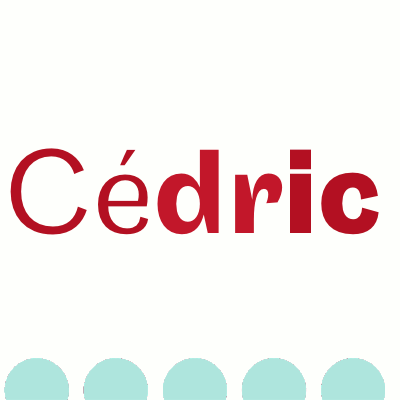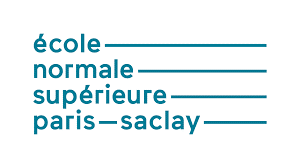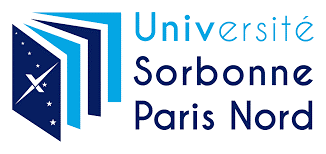Orateurs invités à MSR2021
Les résumés des exposés seront affichés prochainement.Hanifa Boucheneb
Polytechnique Montréal, Canada
Titre : Réduction par ordre partiel des réseaux de Petri temporels
Résumé: Cette présentation s’intéresse aux techniques de réduction par ordre partiel (POR) dans le contexte du modèle de Merlin (réseaux de Petri temporels). Ces techniques visent à réduire le nombre d’entrelacements de transitions à explorer tout en préservant les propriétés à vérifier. Dans les réseaux de Petri non temporels, la sélection des transitions à franchir à partir d’un marquage s’appuie sur la commutativité et la propriété du diamant qui sont garanties pour des transitions sensibilisées non en conflit.
Dans le cas du modèle de Merlin, le graphe d’accessibilité est une abstraction de l’espace des états où tous les états accessibles par la même séquence de transitions sont regroupés et considérés modulo une relation d’équivalence. Dans le graphe ainsi obtenu, la propriété du diamant est difficile à satisfaire, y compris pour des transitions non en conflit. Pour pallier cette limitation, les techniques POR sont généralement utilisées en combinaison avec les ensembles partiellement ordonnés (POSET). Néanmoins, les POSET introduisent des conditions de sélection supplémentaires qui peuvent contrebalancer les avantages des techniques POR. Cette présentation sera consacrée à la discussion de différentes alternatives aux POSET
Saddek Bensalem
UGA Lab. Verimag, France
Title : Engineering Trustworthy Learning-Enabled Autonomous Systems
Abstract : The convergence of scientific and technological developments in the spheres of the computing and networking with the physical side and Artificial Intelligence (AI) will have an impact in the forthcoming period with respect to several system aspects and disciplines. Learning-enabled Autonomous Systems represent an example of that convergence, which embraces engineering and technological products. More specifically, the Learning-enabled System technologies are expected to bring large-scale improvements through new products and services across a myriad of applications ranging from healthcare to logistics through manufacturing, transport and more.
Software is inarguably the enabling factor for realizing such systems. Unfortunately, we still encounter deployment limitation in safety-critical application (transportation, healthcare, etc.), due to lack of trust, behavioural uncertainty and technology compatibility with safe and secure system development methods.
In this presentation, I will talk about the FOCETA project and how, in this project, we try to tackle the challenges of designing trustworthy learning enable autonomous systems. The underlying targeted scientific breakthrough of FOCETA lies in the convergence of model-driven and data-driven approaches. This convergence is further complicated by the need to apply verification and validation incrementally and avoid complete re-verification and re-validation efforts.
Alessandro Giua
Univ. de Cagliari, Italie.
Title : Stability and Consensus in nonlinear Multi-Agent Systems via nonlinear Perron-Frobenius Theory
Abstract : The study of how multiple autonomous agents, composing a Multi-Agent System (MAS), coordinate between them to achieve a desired global behavior has spurred much interest within the control community. A compelling global asymptotic behavior is the consensus, i.e., agreement, among all agents. From a control system perspective, the consensus problem consists in the design of local interaction rules between agents such that their state variables converge to the same value.
The case of agents modeled by linear discrete-time dynamical systems has been thoroughly investigated. The evolution of a linear MAS is described by a matrix, which is usually assumed to be nonnegative (all entries are zero or positive) and row-stochastic (all row-sums are equal to one). As a consequence, the theory for consensus in linear MAS has its roots in the theory developed by Perron and Frobenius for nonnegative matrices.
In this plenary I discuss the case of agents modeled by nonlinear discrete-time dynamical systems, whose evolution is described by a nonlinear map. In such a case, the properties of interest for consensus analysis are monotonicity and plus-homogeneity, which can be seen as the nonlinear counterpart of nonnegativity and row-stochasticity. Based on these notions, several nonlinear extensions of the classical Perron-Frobenius theory have been developed.
I will show that the evolution of an arbitrary nonlinear discrete-time dynamical systems whose map is type-K monotone and plus-homogeneous eventually converges to an equilibrium point of the system, if any exists. Given a MAS it is possible to give necessary and sufficient conditions on the local interaction rule to guarantee that the map of the overall system satisfies the above-mentioned properties. Finally, I will show that under mild conditions the existence of a globally reachable node in the communication graph is sufficient to converge to consensus.
An innovative aspect of this approach is that it provides stability results --- and convergence to consensus as a special case --- based on the (distributed) structure of the system rather than on Lyapunov theory.
Chrsitian Fleck, Andrea Flexeder et Alexandre Wagner
Bosch Department of Corporate Research, Allemagne
Title : Is there nothing as practical as a good theory?
In this talk we will try to give an answer to above topic based on our experience as applied researchers in the field of advanced control for embedded systems in the automotive context.
For this first we want to discuss the following questions from system theorists’ point of view:
-What type of methods were and are as well implemented as used in practice?
-Are they directly derived from those taught at university or rather from new approaches from research and conferences?
The discussion will be followed by some recipes how to make theory working in practice.
We do not hide the difficulties, rather explain them. And based on some examples we share the theory’s (unreasonable!) effectiveness.










